Piedras Negras, Coahuila 作者: 来源: 发布时间:2021-11-18
1.Population and Area
Pop: 245,155 (metro)
Area: 914.2 km2 (munip.)
Elev: 223 masl

2. Natural geography
Nature and weather
Orography
Most of the land is flat, previously there were mountains that are now part of the urban area. 8.5% of the municipal area is used for growing wheat, corn, beans and sorghum.
Hydrography
From north to northeast flows the Rio Grande, forming the border of the municipality with the United States. To the northeast, the San Rodrigo River makes its entrance, which comes from the east of the municipality of Zaragoza, this River flows into the Bravo by the northeast of Piedras Negras; and from the south of the municipality comes the Río San Antonio that comes from Zaragoza to flow to the southeast into the Río Bravo. From east to west flows the Río Escondido, which crosses the south of the city and empties into the Río Bravo.
Natural resources
This region generates a large part of the national production of coal, one of the most important non-metallic minerals in the state in the economic context. It is known as the most coal-producing area par excellence; It comprises the municipalities of Nueva Rosita, Sabinas, Múzquiz and Piedras Negras, located in the north of the state. The mining participation has a significant participation in the state GDP, since it has an approximate annual value of 500 million dollars. The entire coal production is consumed by the state, both by the steel industry and by thermoelectric plants. Similarly, in this area there are large gas deposits.
Flora and fauna
The distribution of the type of soil influences the variety and concentration of the vegetation, mainly in desert types such as governor, mesquite, lechuguilla and ocotillo. There are wild animals such as the coyote, hare, rabbit, deer, wild cat, rat, armadillo, badger and viper.
Köppen Classification: Mid-Latitude Steppe and Desert Climate
This climate type is characterized by extremely variable temperature conditions, with annual means decreasing and annual ranges increasing poleward, and relatively little precipitation. This climate is typically located deep within the interiors of continents and is contiguous with the tropical desert climates of North and South America and of central Asia. This region type owes its origins to locations deep within continental interiors, far from the windward coasts and sources of moist, maritime air. Remoteness from sources of water vapor is enhanced in some regions by mountain barriers upwind.
The Köppen Climate Classification subtype for this climate is "Bsh". (Mid-Latitude Steppe and Desert Climate).
The average temperature for the year in Piedras Negras is 72.3°F (22.4°C). The warmest month, on average, is August with an average temperature of 88.2°F (31.2°C). The coolest month on average is January, with an average temperature of 54.0°F (12.2°C).
The highest recorded temperature in Piedras Negras is 119.5°F (48.6°C), which was recorded in June. The lowest recorded temperature in Piedras Negras is 14.0°F (-10°C), which was recorded in January.
The average amount of precipitation for the year in Piedras Negras is 19.9" (505.5 mm). The month with the most precipitation on average is May with 3.4" (86.4 mm) of precipitation. The month with the least precipitation on average is January with an average of 0.7" (17.8 mm). In terms of liquid precipitation, there are an average of 56.3 days of rain, with the most rain occurring in October with 6.0 days of rain, and the least rain occurring in December with 3.7 days of rain.
http://www.weatherbase.com/weather/weather-summary.php3?s=762430&cityname=Piedras+Negras%2C+Coahuila%2C+Mexico&units=
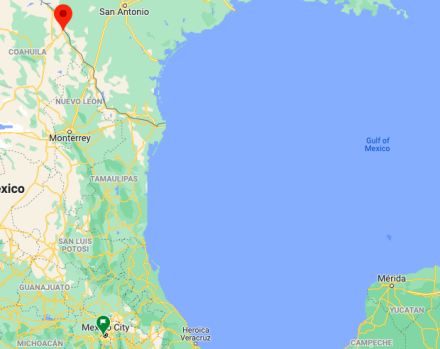
Getting there and around
Get there
By plane – The quickest way to get from Mexico City to Piedras Negras is to fly which costs $2600 - $8500 and takes 4h 15m. The quickest flight from Mexico City Airport to Piedras Negras Airport is the direct flight which takes 2h 50m.
By car – The distance between Mexico City and Piedras Negras is 1041 km. The road distance is 1288.1 km. and takes approximately 20h 45m to get there.
By bus – The best way to get from Mexico City to Piedras Negras without a car is to bus via San Luis Potosí which takes 19h 55m and costs $2100 - $2700. Also, there are services departing from Izazaga and arriving at Piedras Negras via Mexico Norte and Monterrey. The journey, including transfers, takes approximately 21h 4m.
https://www.rome2rio.com/s/Mexico-City/Piedras-Negras
Rideshare – Check out Blabla Car's carpooling service for rideshare options between Mexico City and the city you are visiting. A great option if you don't have a driver's license or want to avoid public transport.
Car Rental – To explore Mexico’s provincial towns and cities—including its beach locations and the scenery and attractions near them— consider renting a car for your visit. Having your own car will give you more flexibility than using public transport options and, in some cases, offer you access to places which are otherwise difficult to visit without the use of a car.
COVID19 – International entry into Mexico from United States
Allowed for: All visitors arriving by air. Mexico land borders are closed to non-essential travel
Restricted for: There are no current restrictions.
Get around
Local Buses – Local buses and mini-buses (combis or micros) are available locally for a fraction of the cost of a taxi around town. You need to speak Spanish to be able to ask for directions or ask the driver to tell you where to get off.
Taxis – Taxis in most of Mexico’s towns and cities are not metered, so agree your price before you get in. Taxi travel is very affordable in Mexico, in comparison to the USA, Canada and Europe, and so provides a viable means of public transportation in Mexico. Your hotel can arrange taxis for you; some post their rates on a board in the lobby; taxi hotel rates are usually higher than cabs you hail off the street. If you speak Spanish, you will have a distinct advantage and be able to negotiate a price with the driver.
Uber is expanding rapidly across Mexico and now offers services in cities across the country, including: Mexico City, Toluca, Cuernavaca, Puebla, Querétaro, León, Aguascalientes, San Luis Potosí, Guadalajara, Monterrey, Hermosillo, Tijuana, Mexicali, and Mérida. Uber has been adding Mexican cities to its network every year, check for availability when you arrive at your destination in Mexico.
Cabify and Didi are also developing and currently operate in cities including Mexico City, Toluca, Monterrey, Puebla, Querétaro and Tijuana. Check for availability in the city you are visiting.
These services offer people with smartphones a way to book a cab through a mobile app for a pre-agreed price. Fares are comparable with Sitio type cabs, and sometimes trade at a premium to this when local demand increases.
https://www.mexperience.com/transport/taxi-travel-in-mexico/#51
3. ECONOMY
GDP: 23,813 M MXN (2010, Piedras Negras-Nava metro area)
https://imco.org.mx/ciudades2010/ciudades/07_Piedrasnegras.html
4. Industry characteristics
Piedras Negras belongs to the North economic region of Coahuila. According to data from INEGI, the secondary and services sectors occupy almost the entire employed population, while the primary sector occupies an almost zero percentage. The maquiladora industry employs almost 10,000 people in the municipality (around 25% of the Employed Population), it is mainly dedicated to the manufacture of automotive parts, electronic components and textiles.
In the municipality there are 6 industrial parks, which have drinking water, drainage, electricity, telephone and public lighting services.
Rio Grande Industrial Park
Piedras Negras Industrial Park
Amistad Piedras Negras Industrial Park I and II
Santo Domingo Industrial Park
Industrial Airport Business Park
North Industrial Park.
Key project: Piedras Negras international bridge
In April, the second phase of the project to build the third International Bridge between the neighboring city of Eagle Pass, Texas and Piedras Negras, Coahuila, began.
This second phase will consist of a more detailed feasibility study in the northern part of Maverick County, a project that has been in the works for more than a year and for which it would be in dialogue with Mexican authorities and the United States government.
For his part, in Mexico, after the North American authorities of Maverick County, Texas, showed them to build this third international bridge, Mayor Fernando Purón Johnston highlighted that said border connection has already been foreseen in the Municipal Urban Development Master Plan In the case of Piedras Negras, city planning points northward urban development in connection with this bridge.
A work of this type requires binational negotiation based on a study, carried out in turn based on the statistics of use of international bridges that already exist, and whose high traffic flow shows an important growth of foreign trade across this border. .
Currently Piedras Negras has surpassed Nuevo Laredo, Tamaulipas, as the main border rail port of Mexico, thanks to the establishment of important industries such as Constellation Brands, which alone exports 500 railroad vans and about 160 cargo trucks with their products.
https://constructivo.com/noticia/firme-la-intencion-de-construccion-de-un-tercer-puente-internacional-en-piedras-negras-1513259963
https://www.noticiasdelsoldelalaguna.com.mx/local/van-por-segunda-fase-de-construccion-del-tercer-puente-internacional-3231586.html
5. Attractions
San Bernardo Mission
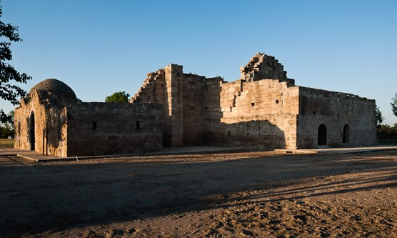
The San Bernardo Mission is a silent witness of the passage of the evangelization carried out by the Franciscans to the inhabitants of Guerrero, Piedras Negras, and other neighboring towns in Coahuila, including the inhabitants of Texas territory.
In the middle of nowhere, this construction preserves remains of baroque architecture and thick rock walls of up to one meter. Seen from the heights, the central nave has a visible Latin cross shape in the open, since few spaces still have a roof except for the dome that you can still see almost completely.
The construction of San Bernardo marks the origin of the town of Guerrero, Coahuila, and is also decisive in the creation of the Alamo, another mission settled in San Antonio de Béjar, today San Antonio Texas -when it still belonged to Mexico- and where that famous “Battle of the Alamo” took place, which led us to lose the territory in the times of Santa Anna.
To be there is to walk through a past that left indelible traces in the timeline of our history, but at the same time forged a deep love for Mexico that you will be able to perceive through the voices and stories of its inhabitants.
https://www.visitmexico.com/en/coahuila-de-zaragoza/guerrero/san-bernardo-mission
Historic Centre
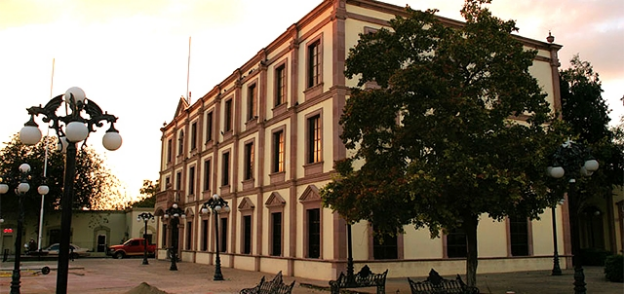
The first settlements of this border city occurred in 1773, as a viceregal site that defended the missions from the attacks of indigenous people.
Undoubtedly, the Historic Centre of Piedras Negras is the place to admire the most representative buildings in the city, lovely architecture and great history. You must visit the Old Railway Hotel, the Old Municipal Presidency, the Zaragoza Market, the House of Culture, the PRONAF Building, as well as Telegraphs, Mail and Customs. Do not forget that it is the birthplace of the nacho, because this snack was invented here.
https://www.barrokas.com/en/visit-piedras-negras-mexico
https://www.zonaturistica.com/en/things-to-do/coahuila/piedras-negras/historic-downtown
Plaza of Culture
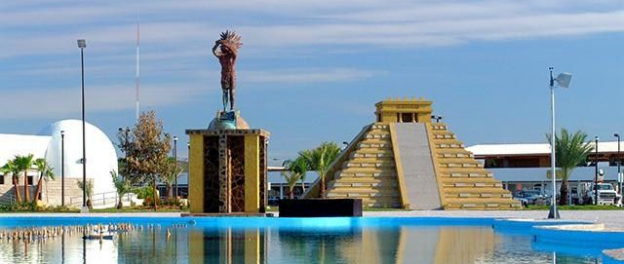
Fusing elements of the Mayan, Olmec and Aztec culture, the square is equipped to take walks while observing some replicas of archaeological zones in the country. So you can see the Pyramid of the Sun, the Pyramid of the 365 niches and the Pyramid El Castillo, obviously on a smaller scale. With children's games, murals, sculptures, auditorium, musical fountain, cultural building, planetarium and shops, enjoy a pleasant walk.
https://www.zonaturistica.com/en/things-to-do/coahuila/piedras-negras/plaza-of-the-culture
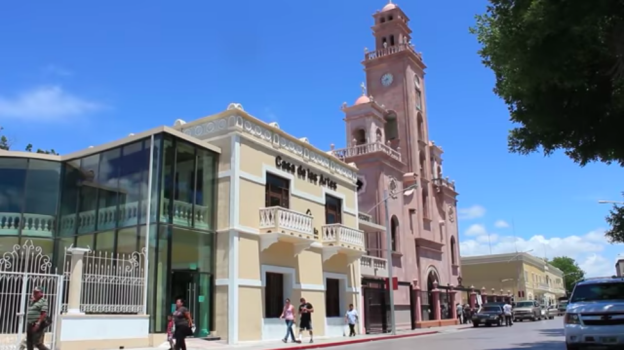
PIEDRAS NEGRAS, COAHUILA MEXICO - TURISMO 2015 (TOURISM)
https://youtu.be/vXDpm6Fw9mg
6. History
On June 15, 1850, a group of 34 men (commanded by Andrés Zapata, Gaspar Salazar and Antonio Ramírez) met with Colonel Juan Manuel Maldonado to give the news that they had created a pass point at Piedras Negras, to the right of the Rio Grande, south of Fort Duncan. They named it Nueva Villa de Herrera, but it later became Villa de Piedras Negras. In Otto Schober's "Breve historia de Piedras Negras," the local historian points out that the 34 men were repatriates (Mexican Americans) who arrived on June 15, 1850, in what was then called "Colonia Militar de Guerrero en Piedras Negras."
In 1855, the town was looted by a small force of 130 Texans that had been organized by Texas slaveholders for a punitive expedition against a nearby border settlement the Texans claimed were fugitive slaves and Indians. The force was led by a captain of the Texas Rangers. As it happened, the incursion was opposed and "repelled by a superior force of Negroes, Indians, and Mexicans who were waiting in ambush" inside Mexico. But the Ranger-led expedition then looted Piedras Negras while returning to Texas.
Following the discovery of huge deposits of coal in the region, in 1881 a railroad track was begun that was completed in 1883. The regional economy flourished and on December 1, 1888, it was granted city status; this time with the name of Ciudad Porfirio Díaz. After the fall of Diaz in 1911, the city reverted to being Piedras Negras, Coahuila.
On April 26, 2004 flooding killed 31 people with up to 60 reported missing.
On April 24, 2007, an F4 tornado struck the city, killing three people there and seven in Eagle Pass, Texas.
On June 14–15, 2013 over 10,000 homes were flooded, but remarkably only caused one death.
On the night of June 8, 2018, former Piedras Negras mayor Fernando Purón was shot in the back of the head by an unknown man while Purón was taking a selfie with an admirer. Purón died on the spot, becoming the 112th candidate or politician to be killed since Mexico's electoral campaign began in September 2017. Purón was supposed to run in the 2018 Mexican election on July 1 as a congressional candidate of the Institutional Revolutionary Party (PRI). Sonia Villareal, current mayor of Piedras Negras and fellow member of PRI, suspended her mayoral reelection campaign in response to Purón's murder to concentrate on her current duties, stating that "We don't (want) his name to be just one more added to the list of candidates who have been victims of these deplorable acts."
7. Other Information: Piedras Negras Biker Fest
The Bike Fest is a motorcycle festival that takes place every year in the city of Piedras Negras in the month of May.
The 2019 Edition had the participation of nearly a thousand motorcyclists that said event was held on the Paseo del Río from May 31 to June 1; The 2020 edition was not held due to the pandemic, but they hope to resume the activities of this party in 2021.
Those interested in registering can do so on the official Facebook page (Biker Fest Piedras Negras).
Normally, in addition to acrobatic shows and various other activities related to motorcycling, local rock bands are invited to play their hits, and the organizers set food stands and an area for the sale and purchase of motorcycles.
The event is completely family-friendly and has a minimum entry cost of approximately 25 Mexican pesos. There are also entry packages that include entry into a drawing for a Harley Davidson motorcycle, as well as other benefits.
https://www.contrapunto.red/se-esperan-hasta-mil-motociclistas-en-bike-fest-2019
8.Contact Information

City Mayor: Claudio M. Bres Garza
Phone number: +52 (878) 782 6666
Facebook: https://www.facebook.com/claudiobresoficial
Twitter: https://twitter.com/claudiobresofic
Website: https://www.piedrasnegras.gob.mx
Govt. Office Address: Monterrey S/N Col. Las Fuentes, Piedras Negras, Coahuila
